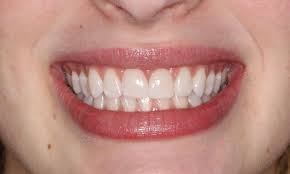An SMAS facelift is known as a superficial musculoaponeurotic system facelift. It is a surgical procedure that aims to rejuvenate the face and neck by tightening the underlying muscle layer.
This technique is different from a traditional facelift in that it targets deeper structures of the face. In this document, we will explore the key differences between an SMAS facelift and a traditional facelift,
With such options, it is important to understand the options available to you and their associated benefits. So, read on to learn more about these popular facelift techniques.
Let’s get you started!
Comparing Technique
While both procedures aim to tighten and lift loose skin, they differ in how they achieve this. A traditional facelift primarily focuses on tightening the skin and removing excess fat from the mid-to-lower face. This includes the jowls and sagging cheeks.
On the other hand, an SMAS facelift not only addresses these areas. It also targets the deeper layers of the face. This includes the muscles and connective tissues.
This means that the results of a SMAS facelift are more natural-looking and longer-lasting compared to a traditional facelift.
Comparing Results
As the SMAS technique targets deeper layers of the face, it can provide more significant and longer-lasting results compared to a traditional facelift. Moreover, traditional facelifts may result in a “pulled” or overly tight appearance.
SMAS facelift can provide more natural-looking results. This is achieved by lifting and tightening the underlying structures of the face. With the results for both procedures, it is important to note that individual outcomes may vary depending on factors such as:
- age
- skin elasticity
- overall health
Such results will be discussed with you during the initial consultation with your plastic surgeon.
Comparing Recovery Time
As the SMAS technique is less invasive. It can typically result in a shorter recovery time compared to a traditional facelift. This means that patients who undergo an SMAS facelift may be able to return to their daily activities sooner. This is because they can expect less discomfort and downtime.
During the recovery period, it is important to follow your surgeon’s post-operative instructions for optimal healing. It’s essential to:
- keep your head elevated
- avoid strenuous activities
- take prescribed medication as directed
Comparing Scarring
Another difference between these two facelift techniques is the placement of incisions and resulting scarring. A traditional facelift involves longer incisions, which may be more noticeable and require more time to heal.
On the other hand, an SMAS facelift uses shorter incisions placed in less visible areas, such as behind the ear or along the hairline. This can result in minimal scarring and a more natural-looking outcome. When dealing with scarring, it’s always essential to follow your surgeon’s aftercare instructions for optimal healing and minimal scarring.
Going for a facelift by Dr. Repta, for example, can help achieve maximum results with minimal scarring. Working with an experienced plastic surgeon who uses advanced techniques to provide natural-looking and long-lasting results for his patients is beneficial.
Understand the Difference between a SMAS Facelift and a Traditional Facelift
Both an SMAS facelift and a traditional facelift are effective procedures for rejuvenating the face and neck. However, they differ in terms as discussed above. It is important to consult with a qualified plastic surgeon to determine which technique is best suited for your specific needs and desired outcome.
With the right information, you can make an informed decision. You can achieve a more youthful and refreshed appearance. So, don’t hesitate to explore your options for facial rejuvenation. Choose the facelift technique that is right for you!
For more topics, visit our blog.






Add comment